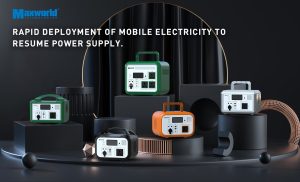200Ah LiFePO4 (Everything you need to know)

200Ah LiFePO4 - What needs to be known?
The solar battery industry may be very perplexing.
There is simply a ton of (often false) information available. It makes deciding where to begin your off-grid path difficult.
But don’t worry—we’re here to assist!
If you’ve looked into effective energy storage methods at all, you’ll know that lithium iron phosphate batteries (LiFePO4) is the best option.
However, when you the answer to the query, “How do you know the most efficient energy storage technology currently?” that will be generated several other queries.
Let’s put up a simple yet informative article with all the information you should know about 200Ah LiFePO4 batteries to address these or any other questions you may get.
What Is A LiFePO4 Battery With 200Ah?
Let’s begin with the fundamentals:
Generally, we know a 200Ah LiFePO4 battery is a power source and energy storage system made up of one or more electrochemical cells in which chemical processes take place, and through these processes, chemical energy is converted to electrical energy (and vice-versa).
There are two categories: primary batteries and secondary batteries, which you know in the market.
The chemical processes in primary batteries are unstoppable. But when external power is applied, the reactions in secondary batteries will be reversed.
So considering this result, a LiFePO4 battery is one type of secondary lithium-ion battery because it would store chemical energy and transform it into electrical energy as soon as necessary situation.
The cathode for this battery is made of lithium iron phosphate, therefore its name.
Amp-Hours
The 200 Ah, what about them? How does that make sense?
Generally, we know a battery’s capacity is measured in ampere-hours and known as amp-hours or simply Ah. But it describes how much current you will take from a battery over a specific period. So “200 Ah” denotes the max. quantities of current you can draw from a battery in 1 hour before it runs out and it indicates that you can use 200 hours of 1 amp or 100 hours of 2 amps of power.
Can you see the reasoning here?
It applies to different ampere values as long as multiplying ampere by hours yields a result of 200 Ah.
Oh my my, that was a lot.
However, these are essential details that will help you comprehend what is to come, so your efforts will be rewarded.
What are the lift cycles for a 200Ah LiFePO4 battery?
“Life Cycles” means the number of charge cycles a battery will be handled before losing 80% of its initial specified capacity is referred to. The battery’s performance starts to significantly decline at this stage.
As was already mentioned, a battery’s “charge cycle” entails both a discharge and a recharge.
Depending on how well they are maintained, numerous factors have an impact on each battery’s life cycle. This is also influenced by the sophistication of the production technique.
In other words, the number of cycles your 200Ah LiFePO4 battery has will depend on how you charge it.
Despite being more resistant to full charge and harsh conditions (overcharge, low temperatures) than other lithium-ion chemistries, LiFePO4 batteries’ performance and lifespan are nevertheless impacted by environmental factors and charging habits.
With the aforementioned in mind, it is clear to see why calculating the number of life cycles for a 200Ah LiFePO4 battery is not so straightforward. That’s why the figure is based on how good your batteries are maintained.
LiFePO4 batteries are made of extremely stable components that don’t quickly decay with use, in contrast to the typical lead-acid batteries. They are built to last for a fair amount of time.
A 200Ah LiFePO4 battery can run for up to 3000 cycles on average.
If the battery goes through one cycle (one discharge and recharge) per day, this equates to 8 years.
A lot, I assume?
Yes, that is a lot compared to the 300–500 cycles a deep-cycle lead–acid battery provides.
For various battery manufacturers or models, you’ll find varied figures: some fall between 2000 and 4000 cycles, while others fall between 4000 and 6000 cycles. However, how many cycles your battery will last depends on time (and how you treat it).

Is The Price Of A 200Ah LiFePO4 Battery Worth It?
Simple to answer the question at last!
Unquestionably, a 200Ah LiFePO4 battery is worth the price.
LiFePO4 batteries are without a doubt one of the best energy storage options available today for large systems (houses, cars, solar panels, etc.), and with good reason.
Why the LiFePO4 Battery Is Better?
You can refer to some advantages LiFePO4 batteries have over deep-cycle lead-acid batteries as follows:
increased energy density
greater longevity
safer components
little maintenance required
a lot lighter (comparing the same usable energy)
Charge more quickly Environmentally friendly
Low rates of self-discharge
They are non-combustible because they are made of stable chemicals.
high tolerance for oppressive circumstances
heightened thermal stability
overall increased effectiveness
These factors have led to the beginning of the replacement of old lead-acid batteries with LiFePO4 batteries.
How quickly can a 200Ah LiFePO4 battery be charged?
According to the charge, currently used.
For 12V 200Ah LiFePO4, the typical suggested charging current ranges from 10A to 50A.
Let’s assume that your LiFePO4 battery has a 20% state of charge and that the 40A charging current is offered by the charger you are using.
It would take 4 hours to fully charge a 200ah LiFePO4 battery.
This is because you would need to supply 160Ah or 80% of 200Ah, then it would take 4 hours to fully charge the battery using 160Ah at your charger’s 40A charging current.
The charging current used affects how long it takes to charge. Keep in mind that you shouldn’t charge your battery cell above the stated current limit.
How Much Power Can A 200AH LiFePO4 Battery Provide?
Let’s first determine how much power a 12V 200Ah LiFePO4 battery can deliver to determine what kind of load it can drive:
(For a 100% Depth of Discharge) Power = 12V x 200 Ah = 2400 Wh = 2,4 kWh.
This battery produces 1920Wh = 1,92 kWh for the suggested 80% DoD.
It is easier if you know how many watt-hours you can get out of a battery because most appliances’ rated loads are specified in terms of wattage.
In light of this, let’s examine the typical power ratings for common appliances (see the table below):
Equipment Watts (Volts x Amps) time each day Watts daily
Inverter 34 24 816
3 LED lights 9 each 5 135
Laptop 60 6 360
Ceiling fan 70 6 420
Refrigerator 170 11 1870
Phone charger 5 6 30
Coffee maker 1400 0,1 140
Small LCD TV 25 4 100
Water filter and cooler 80 10 800
WiFi Router 10 18 180
You can see what the battery is capable of powering now that you have the projected power ratings of appliances and the power provided by the battery represented in the same unit (Wh).
Determine the power capacity of your battery.
Check your appliances’ power ratings.
Examine what can be powered using these figures.
In conclusion, a battery of this type will power several home appliances with varying power ratings, but the run time will shorten as the wattage requirement rises.
A 200Ah LiFePO4 battery is what voltage?
Multiple cells are assembled to form batteries. The nominal voltage of a battery will depend on how many cells it contains.
Generally, the standard voltage of LiFePO4 battery cells is 3.2V. Therefore, four cells are connected in series to create a 12 V battery. The resultant nominal voltage would be 12.8V. So in the same way, we need to connect 8 battery cells in a series to provide a 24V LiFePO4 battery, with a nominal voltage of 25.6V.
At last, we also need to connect 16 battery cells in a series that provides a 48V LiFePO4, and with a nominal charge of 51.2V.
If a 200Ah LiFePO4 Battery Start A Car, Is It Okay?
As starter batteries, lead-acid batteries are employed.
Yes, theoretically speaking. LiFePO4 batteries can function as start batteries, supplying a significant surge of power for a brief amount of time even though they are intended for lengthy, relatively sluggish power outputs.
Depending on the battery voltage, a compact popular car’s starting current typically ranges from 150 to 200 A. The engine will need about 200 amps to start on a 12V battery.
The “peak discharge current” of a 12V 200Ah LiFePO4 battery can be found in the discharge specs
A typical car can be started with this 200Ah LiFePO4 battery’s 200A Peak Discharge Current (for 7.5 seconds).
But just because they aren’t made for something doesn’t mean you should use them for it. Lead-acid batteries are a superior option in this scenario.
Lead-acid starter batteries are no longer required for starting engines because LiFePO4 batteries are far more capable.
Such as the first issue is that the surge current is needed to start a car, but that will be destroyed your battery’s BMS, also causing to the battery be worthless.
Second, your alternator can get harmed if you use a LiFePO4 battery as a starter battery.
The alternator takes over and starts to charge the car’s battery as soon as the battery starts its engine. A LiFePO4 battery uses all of the available electricity from the alternator because of its low internal resistance.
Therefore, even though using a LiFePO4 battery to start an automobile is theoretically possible, doing so is not advised.

Conclusions:
We hope this post has persuaded those of you who weren’t sure about buying a brand-new LiFePO4 200Ah battery to go ahead and do it!
LiFePO4 batteries are among the safest and most dependable solutions on the market for effectively storing energy. They compensate for its high initial cost with a lengthy lifespan.
Maxworld Power produces LiFePO4 batteries at reasonable prices and excellent quality. Welcome to your inquiry any time!











